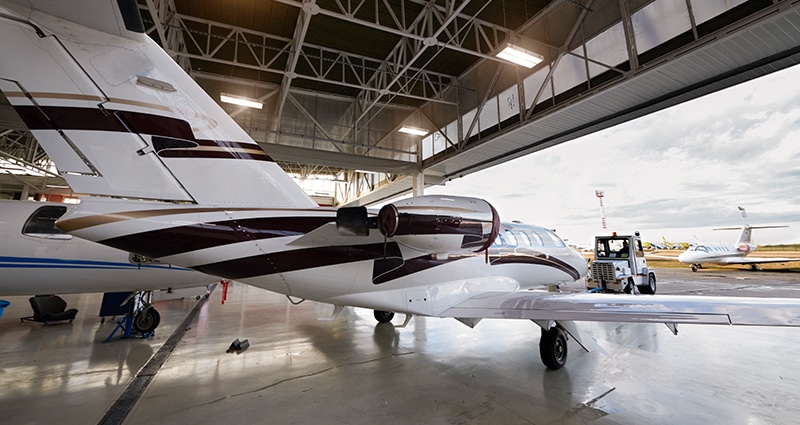Ground Incidents – Slow Down To Go Fast

There are approximately 27,000 ramp accidents and incidents worldwide each year. While the injury rate is about 9 per 1,000 departures, and we care deeply about the cost to our personnel, the price we pay for these mishaps goes far beyond the bodily toll.
This is not simply due to aircraft damage, but also due to the time and labor spent to repair an airframe and absorb the cost of its downtime. This can be substantial, especially in a world where airworthiness equates to profit.
The sad part is that the majority of these incidents occur due to human error. There is not one documented case of an aircraft leaping out to assault a hangar door, nor does ground equipment randomly slam into an airframe without an unfortunate assist.
Most often, it is due to many factors, with time pressure being high on the list and fatigue a close second. While every aircraft movement is unique, the circumstances leading up to incidents rarely are.
Searching for Solutions
Attributing incidents to carelessness or apathy is easy. Finding solutions and addressing contributing factors is much harder.
There are numerous programs and training efforts designed to reduce errors and mishaps. However, each comes down to the will of the individual to focus solely on the mission at hand and take a methodical, logical approach to each movement or action. We know how to conduct operations correctly, but knowing why you might do it incorrectly is another issue entirely. We must always ask ourselves “What is different about this action?”
Recognizing your own personal distractions and biases, and quite often the pulse of the aviation culture in your particular organization, can be key. Business aviation is generally a time-driven operation with pressure (often self-induced) to launch as scheduled, arrive on time, beat weather delays and keep the passengers happy. This creates pressure to move faster and sometimes trade safety for what appears, at the time, to be efficiency.
There is an old saying that, “If you don’t have time to do it right, you must have time to do it again.” Or, as military special operations personnel say, “Slow is smooth and smooth is fast.”
Staying Grounded in Safety
Ground operations are often taken for granted because aircraft are typically pictured in the sky. In reality, an aircraft spends the majority of its time on the ground and, therefore, that is where it is most vulnerable.
We tend to assume that each aircraft movement will be the same as the last. And we ignore the fact that there are perhaps different people involved, at different times of day, with different rest factors, unique distractions on their mind and possibly very different weather conditions. Countless factors ensure that no aircraft movement is exactly like another. Yet, we too often treat it like a familiar cousin with little consideration of what might present a unique danger for each movement.
We are also sometimes too comfortable, complacent, or overconfident in our abilities to operate in a state of perpetual fatigue. “I’ll sleep when I’m dead” is the mantra of overachievers, who often pursue aviation as a profession.
We perceive ourselves as more capable and able to handle more than most. This is not always true. We are fallible. We are biased. We are susceptible to fatigue. And we need to pause to recognize the risk of incidents and accidents that are entirely preventable if we are willing to slow down to go fast.
Looking to Our Leaders
Leadership bears some of the responsibility for many incidents. Giving ground personnel license to slow down, reducing the repercussions from delays and perhaps rewarding team members for diligence and judgement in hectic times can go far in empowering workers to take ownership of aircraft movement. What have we gained if we move an aircraft faster only to incur damage which precludes flight?
Perhaps the bottom line is understanding that aircraft ground movement cannot be a purely top-driven event. It must be done quite deliberately and exclusively by qualified ground personnel who are present, aware, empowered and free to make safety calls outside of leadership pressure.
We must acknowledge the unique nature of each aircraft movement and respect that sometimes we must trade speed for effectiveness. It means we must be patient and we must be dedicated to solving the issue of ground damage rather than simply giving it lip service and hoping for the best.

Advanced Aircrew Academy offers over 120 eLearning modules, several of which address Worldwide International Procedures and Aircraft Security, that can be customized for your specific flight department operations.
https://www.aircrewacademy.com/
© 2025 Advanced Aircrew Academy. All Rights Reserved.
Next ArticleRelated Posts

Part 108: The Next Step in BVLOS Integration and Drone Innovation
As the drone industry awaits the Federal Aviation Administration’s (FAA) forthcoming Part 108 regulations, the landscape of Beyond Visual Line of Sight (BVLOS) operations stands on the brink of transformation. These anticipated rules aim to standardize BVLOS flights, enabling more complex and expansive drone missions across various sectors.

Giving the Hazard Log the Attention It Deserves
Safety risk profile. Hazard log. Hazard risk register. Whatever you call it internally, one thing is clear: It is a fundamental requirement in your safety management system.
